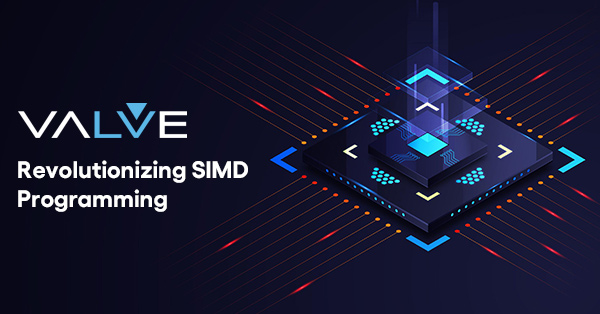SAN JOSE, CA / 5 March 2024 – MulticoreWare Inc. announced the launch of their new tool, VaLVe, to enhance explicit vector programming across various architectures, enabling portability of vectorized applications. VaLVe enables software to adapt to the increasingly diverse set of processors in today’s cloud and edge ecosystems to enable faster development.
VaLVe reshapes the landscape of SIMD programming, which has been dominated by solutions with limited portability or tenuous performance. Offering a versatile vector programming layer for application development, VaLVe provides the portability and ease of use of standard C/C++ with the efficiency of platform-specific intrinsics.
Performance-minded application developers have long experienced the pains of manually updating applications with legacy SIMD optimizations to a new set of vector extensions. VaLVe’s productivity gains enable developers to optimize for new ISAs like SVE and RVV more quickly while seamlessly maintaining support for established technologies like NEON and AVX in a single codebase.
John Stratton, Chief Technology Officer, MulticoreWare said, “We have been using VaLVe internally on a couple of projects and are very pleased with the resulting ease of use and performance. VaLVe serves as the bridge that empowers developers to navigate the ever-changing landscape of CPU architectures, optimizing both programmer productivity and application efficiency with finesse. Our goal with this product is to accelerate the performance maturation of software on emerging platforms so that the industry can fully capture their promised energy and cost reductions.”
Vinod Kannan, VP & GM, Compute BU at MulticoreWare said, “VaLVe embodies our commitment to empowering developers with a dynamic toolset for efficient programming. By taking control of vectorization with VaLVe, software developers can speed up their development and make their applications performant across the variety of architecture and compiler versions they may need to support with improved productivity and portability.”
About MulticoreWare
MulticoreWare delivers software IP Solutions and Engineering Services serving a wide group of customers with solutions like Hardware Platform Compilers & Toolchains, SDK Libraries, Video codecs, and Algorithm & Data Engineering solutions using various vision & non-vision sensors (Radar, LiDAR, IMU, GPS, etc.). MulticoreWare’s solutions are used in Automotive (ADAS/AD), Surveillance, Defence, Medical-Imaging, Health, IoT, Retail, Industrial, Robotics, Smart City. MulticoreWare’s industry-leading video codec products (x266™/x265/Ultraziq) have been deployed in live streaming or VOD services across many broadcast customers.




























